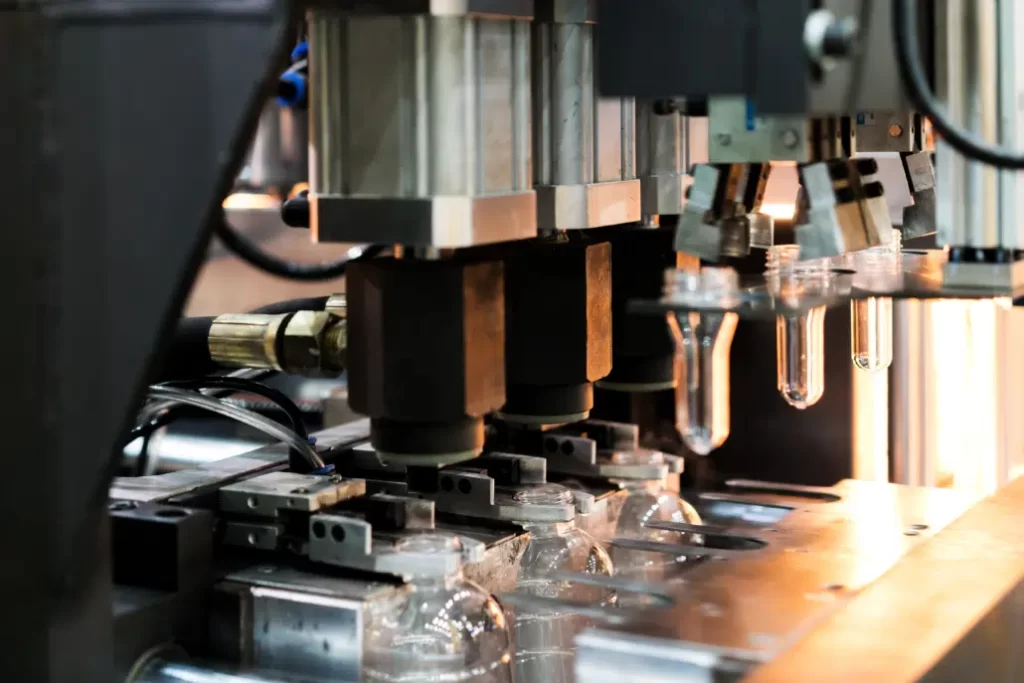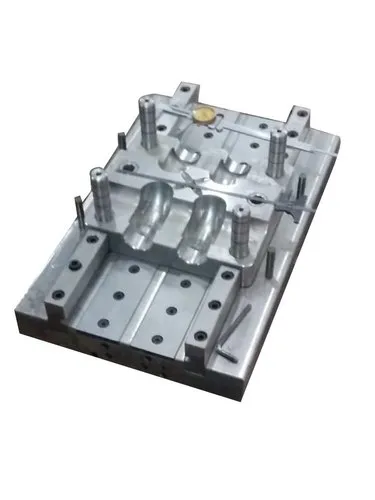Injection Blow Moulding (IBM) is a manufacturing process used to produce hollow plastic objects, typically containers such as bottles and jars. It combines elements of injection moulding and blow moulding to form precision-engineered, high-quality plastic parts. The process is best suited for the production of small to medium-sized bottles, especially in the pharmaceutical, cosmetic, and food and beverage industries.
Injection Blow Moulding Process
The Injection Blow Moulding process generally consists of three main stages:
1. Injection
Material Preparation: Thermoplastic resin (e.g., PET, HDPE, PP) is melted in an injection moulding machine.
Preform Creation: The molten plastic is injected into a mould to create a preform or parison (a tube-like piece with a closed bottom and an open neck).
The preform includes the finished neck of the final container, which ensures high dimensional accuracy for cap fitting.
2. Blowing
Transfer to Blow Mould: The preform is transferred to a blow mould cavity using a rotating indexing system.
Inflation: A rod is inserted into the preform and compressed air is blown in, causing the plastic to expand and take the shape of the blow mould.
The blowing process stretches the plastic in both axial and radial directions (biaxial orientation), improving strength and clarity.
3. Ejection
After cooling and solidifying in the mould, the final product is ejected from the mould.
The containers typically require little to no trimming or secondary finishing.
Types of Injection Blow Moulding
Standard Injection Blow Moulding: Most common; uses rotary indexing.
Injection Stretch Blow Moulding (ISBM): Includes a stretching phase before or during blowing for enhanced strength, mainly used for PET bottles.
Applications of Injection Blow Moulding
Injection Blow Moulding is widely used in industries that demand high precision, consistency, and clarity. Common applications include:
Pharmaceutical Industry
Medicine bottles
Nasal spray containers
Dropper bottles
Cosmetic Industry
Perfume bottles
Cream jars
Makeup containers
Food and Beverage Industry
Small juice and dairy drink bottles
Flavoring and condiment containers
Household and Personal Care Products
Shampoo and conditioner bottles
Cleaning product containers
Hand sanitizer bottles
Advantages of Injection Blow Moulding
High precision and dimensional accuracy
Excellent surface finish and clarity
Uniform wall thickness
Ideal for automation and high-volume production
No trimming or flash, reducing waste
Limitations
Not ideal for large containers
Tooling costs are relatively high
Limited to certain thermoplastics like PET, PP, and HDPE
Conclusion
Injection Blow Moulding is a highly efficient process for producing small, complex, and high-quality hollow plastic containers. Its precision and consistency make it the preferred choice in industries requiring tight tolerances and aesthetically appealing packaging.


